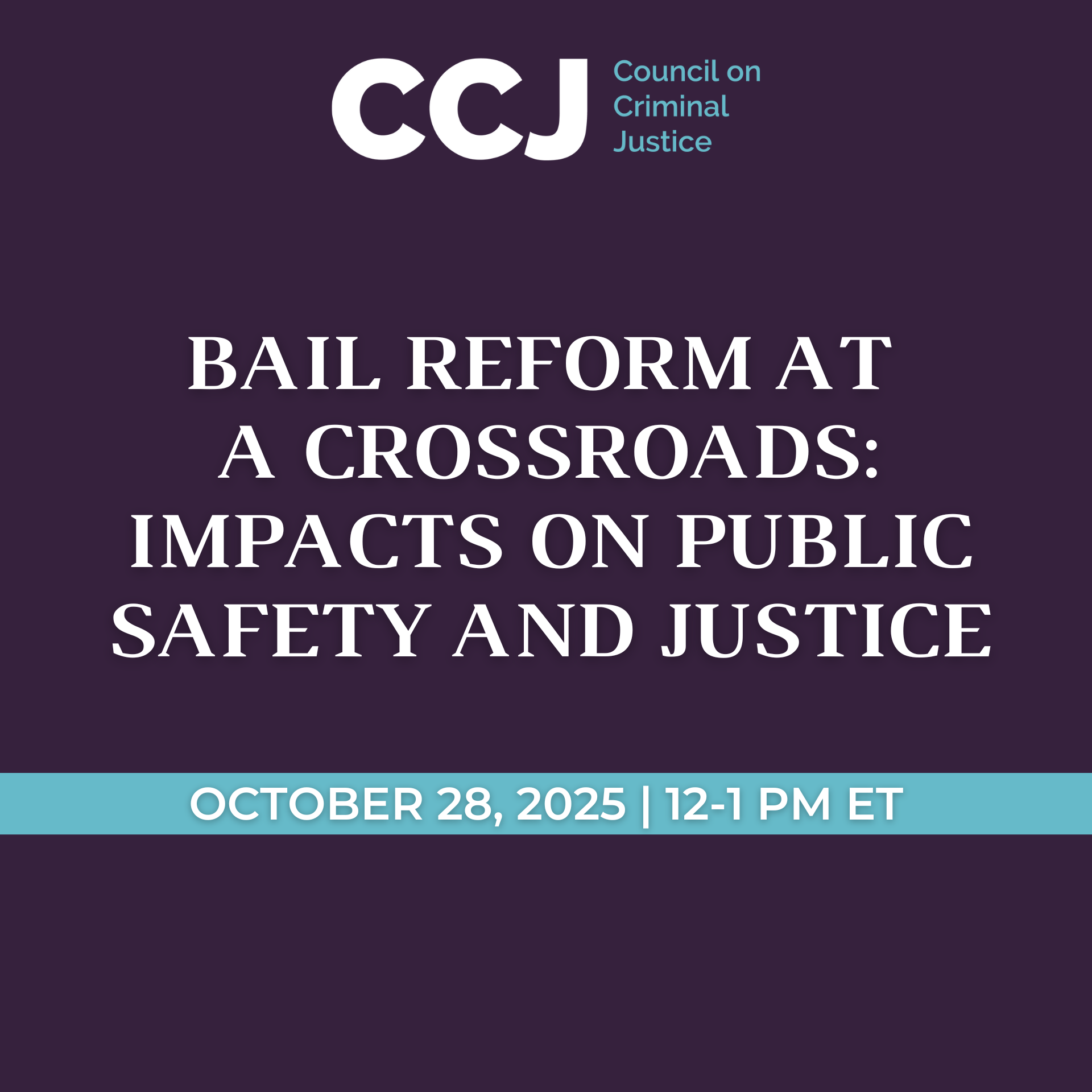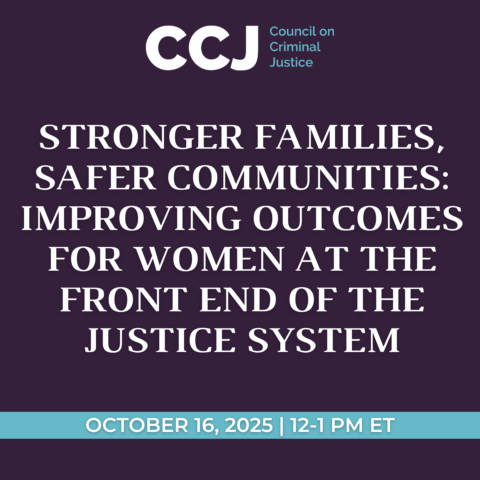As 2022 begins, America’s cities confront an ongoing surge in violent crime, particularly homicide. The Council on Criminal Justice documented a 30% rise in murders nationwide in 2020, while police data from large cities reveal another 7% increase in 2021. Indianapolis, Philadelphia, Portland, and at least ten other municipalities experienced the most homicides in their cities’ history last year. This spike has been driven primarily by community gun violence, or violence involving firearms in community settings. It is claiming lives, tearing families and communities apart, filling prisons, and eroding support for policing and other criminal justice reforms. Policymakers and practitioners need to put polarized, “us versus them” politics aside and focus on solutions that strengthen both community and enforcement-based approaches.
In response to the crisis, the CCJ launched a Violent Crime Working Group in July 2021. Composed of a diverse range of leaders, the Group dedicated itself to saving lives by producing anti-violence guidance that is timely, relevant, and reliable. Since then, the Group has met 11 times, consulted with the field’s leading experts, produced three reports on national crime trends, held two live public web events, and issued seven bulletins highlighting its key findings and featuring concrete recommendations to improve policy and practice in this critical area.
In this final report, the Group identifies Ten Essential Actions that cities can take now to reduce community gun violence. This list is not comprehensive; instead, it highlights the actions members believe are most likely to make the greatest immediate impact on violence. Listed in roughly sequential order, the actions are short-term measures that can be carried out within a year. They are not a substitute for longer-term strategies and investments that can address poverty, inequality, racism, and other underlying systemic causes of crime and violence. In addition, state and federal support are key to help cities succeed in their front-line anti-violence campaigns.
Four principles guide the work of the Group. First, the Group is solution-focused, with an emphasis on providing concrete assistance to leaders in the field. Second, it is evidence-informed, recognizing that reliable research and data are critical to understanding the complex challenge posed by violent crime. Third, it is community-engaged, noting the importance of involving those who are most frequently and directly exposed to crime and violence. Fourth and finally, it is humanity-centered, reaffirming the humanity of all those impacted by promoting healing and minimizing harm.
Ten Essential Actions
- Set a clear goal: commit to saving lives by stopping violence
- Identify the key people and places driving the violence
- Create a citywide plan for engaging key people and places
- Engage key people with empathy and accountability
- Address key locations using place-based policing and investment
- Place responsibility for violence reduction at the top
- Emphasize healing with trauma-informed approaches
- Invest in anti-violence workforce development
- Set aside funding for new stakeholders and strategies
- Commit to continuous improvement based on data, evidence, and peer-to-peer learning
1. Set a clear goal: commit to saving lives by stopping violence
Homicide and other violent crimes devastate cities in human and economic terms. In Chicago in 2021, homicide collectively cost the city almost $8 billion in criminal justice and medical costs, lost wages and earnings, diminished property values, and reduced quality of life.1 And that is just the price of murder. The human and economic costs of all violent crime run far higher.
Preserving life by preventing lethal or near-lethal violence is the primary goal of any true anti-violence effort, and progress should be measured in concrete terms: fewer homicides and non-fatal shootings. City leaders should commit to tangible reductions in these measures. Annual 10% reductions in homicides and non-fatal shootings are realistic goals.
2. Identify the key people and places driving the violence
In every city, violence concentrates among small sets of individuals, groups, and locations. To effectively reduce violent crime, cities should begin with a rigorous problem analysis like this one completed in Oakland. These analyses draw on incident reviews, shooting data, law enforcement intelligence, and social network mapping to identify the people and groups most likely to become involved in a violent incident. Also critical: mapping the occurrence of such incidents to reveal the micro-locations, or “hot spots,” where most violence happens. These analyses should then be reviewed by trained street outreach workers and other non-police individuals with relevant experience. This foundational work is critical to creating a shared understanding of a city’s violence and guiding collaborative efforts. More information can be found here.
3. Create a plan for engaging key people and places
Addressing violence demands a multi-disciplinary response and a strategic plan to effectively organize these efforts, such as these paired plans from Dallas. Most critically, leaders must coordinate stakeholder activities focused on the highest risk people and places. Plans should be practical and actionable, detailing concrete commitments: for key people and in key places, who will do what, by when? These commitments should use SMART (specific, measurable, achievable, relevant, and time-bound) criteria. Plans should also identify which activities will not be undertaken in order to maintain focus, as trying to do too much often results in failure. Finally, plans must emphasize partnership, particularly between members of law enforcement and impacted communities, where relationships are often severely strained.
4. Engage key people with empathy and accountability
Those individuals and groups at the highest risk of violence must be placed on notice that they are in great danger of being injured, killed, arrested, and/or incarcerated. This message must be delivered with a combination of empathy and accountability. Supports and services must be offered so people have something better to say “yes” to, but it must be made clear that further violence will not be tolerated.
Outreach workers in neighborhoods and hospitals where shooting victims are recovering can defuse conflicts, connect people to services, and serve as crucial go-betweens for a city and some of its most disconnected citizens, as they do in New York City. Cognitive behavioral interventions like those used by READI Chicago can help even the most traumatized individuals begin to heal and make better life decisions. Proactive policing, like the “precision policing” effort also in New York City, can put high-risk people and groups on notice that they are being watched and that further violence will be met with swift and certain consequences. Focused deterrence strategies, such as Oakland Ceasefire, are a successful framework for all such engagements, blending customized supports for high-risk individuals with targeted sanctions as needed. Finally, improving homicide and shooting clearance rates, which Boston has accomplished, can deter future violence and disrupt cycles of retaliation. More information can be found here and here.
5. Address key locations using place-based policing and investment
A combination of place-based policing and investment can calm violent spaces. Police are necessary to disrupt existing cycles of violence and stop others from starting. But such short-term actions must be supplemented and quickly replaced by place-based interventions and investments to change the nature of violent micro-locations and the communities in which they are located.
Problem-oriented policing, conducted in collaboration with residents as demonstrated by the Community Safety Partnership in Los Angeles, can begin the process. Environmental crime approaches such as cleaning-and-greening in Philadelphia as well as changing traffic patterns and repairing, upgrading, and adding streetlights can influence the trajectory of these areas. Finally, targeted investments and deployment of resources must be made to improve education, employment, healthcare, housing, transportation, and other socioeconomic factors that can give rise to crime and violence in the first place. More information and resources can be found here and here.
6. Place responsibility for violence reduction efforts at the top
Every city suffering from high rates of violent crime should have a permanent unit dedicated to violence reduction operating inside the mayor’s office, with senior leadership reporting directly to the mayor. These units, such as the Office of Gang Reduction and Youth Development (GRYD) in Los Angeles, can provide direct services as well as administer funding and should act as a hub for city anti-violence efforts. Housing the unit outside the mayor’s office or placing intermediaries between the mayor and the unit’s leadership will significantly diminish performance and long-term viability across administrations. These units must be sustainably staffed and substantially funded in order to be successful long-term. More information and resources concerning these units can be found here.
Within law enforcement agencies, chiefs and other top leaders must demand a consistent focus on preventing violence, not just making arrests, and on working with citizens and community partners. Effective management also includes rewarding officers for outcomes like reduced victimization, rather than outputs like the number of pedestrian or car stops they make. Similarly, non-law enforcement leaders such as those running community-based anti-violence organizations should maintain a focus on anti-violence outcomes, not outputs such as services delivered.
7. Emphasize healing with trauma-informed approaches
Gun violence disproportionately affects the poor and powerless in our society. In certain communities, Post-Traumatic Stress Disorder is more common among residents than among veterans of the wars in Afghanistan, Iraq, or Vietnam. Victims of violent crime are more likely to be victimized again, and many victims are subject to multiple forms of violence, known as polyvictimization. Finally, those exposed to chronic violence are more likely to perpetrate violence themselves.
Agencies working with victims and survivors of violent crime should use a trauma-informed approach, such as the model used by the Trauma Recovery Center in San Francisco. This means acknowledging and recognizing the impacts and symptoms of trauma and ensuring that supports and services are delivered in a way that does not retraumatize victims. Law enforcement officers also experience trauma and benefit from such approaches as well. More information and resources can be found here, here, and here.
8. Invest in anti-violence workforce development
Too many in the violence reduction field have worked too long without proper support or recognition. Many street outreach workers, for instance, work for little pay, no benefits, and with minimal opportunity for advancement. Most do not receive sufficient support for addressing the trauma – direct and vicarious – that comes with anti-violence work. Investing in a professional and sustainable anti-violence workforce means providing adequate salaries, benefits, and prospects for upward mobility through effective training and education. Law enforcement agencies, meanwhile, are suffering from serious morale, retention, and recruitment challenges. That workforce also needs additional support to perform at its best.
9. Set aside funding for new stakeholders and strategies
There is a large base of rigorous evidence about what works, and what doesn’t, when it comes to violence reduction. That said, there is still room for learning and improvement. While most funding should be reserved for strategies with demonstrated track records of success, some portion of anti-violence dollars should be set aside to promote innovation. Development funds should be created to nurture new leaders and organizations with small grants, training, and technical assistance. Innovation set-asides can support new anti-violence strategies intended to establish proof of concept and pave the way for additional funding. Intermediary, pass-through, and fiscal sponsorship agreements can ensure that less-established organizations can still participate in city efforts.
10. Commit to continuous improvement based on data, evidence, and peer-to-peer learning
Strategies must be tested to see if they actually stop violence and save lives. Plans must be reviewed and, if necessary, revised. Leaders should embrace a learning culture that is able to recognize when strategies are not working and shift course – without starting over from scratch. Data must be gathered and research partners should be engaged early to assess performance, working in close consultation with police and community partners.
Reducing violence requires a diverse range of stakeholders, and the best way to focus and maximize their efforts is through information-sharing networks. In today’s interconnected world, networks can promote peer-to-peer learning across bureaucratic and jurisdictional boundaries. Efforts like the National Network for Safe Communities and the newly-established National Offices of Violence Prevention Network can also promote fidelity to evidence-informed practices, encourage collaboration, spur innovation, and build capacity for action. Finally, they can serve as vehicles for broader institutional and systemic change.
State and Federal Support
Most anti-violence efforts happen at the local level, but state and federal support are key to help cities succeed in their front-line anti-violence campaigns. States and the federal government can support the essential actions outlined above through messaging and convening, grantmaking and fiscal incentives, regulation and legislation, and through the direct actions of certain agencies.
- Help cities set the right goals. Prioritizing violence reduction can be politically difficult for local leaders seeking to portray their cities as safe and healthy places to live, work, and raise families. State and federal leaders can encourage their local counterparts with clear messaging as well as fiscal incentives for doing what is necessary, not politically expedient. This means emphasizing clear anti-violence goals, evidence-informed strategies, and partnership between law enforcement and community groups.
- Support evidence-backed strategies, workforce development, and technical assistance while also investing in innovation. Most state and federal dollars invested in local violence reduction efforts should fund proven strategies and the capacity building and training needed to sustain and expand those strategies. At the same time, resources must be made available for localities to pursue or enhance promising or emerging approaches to reducing violence. Also key is support for improving the quality and quantity of relevant data and research as well as peer-to-peer learning through convenings and information-sharing networks.
- Align state and federal actions with local anti-violence priorities. For state and federal agencies that work directly on anti-violence issues, aligning activities with local efforts is essential. State probation and parole agencies can create specialized caseloads to better supervise and support high-risk individuals, the FBI and U.S. Attorneys can coordinate with local law enforcement to incapacitate persistently violent individuals and groups, and health, labor, education, and other non-enforcement agencies can similarly focus their resources. A coherent, whole-of-government approach that identifies and engages the key people and places driving local violence is the goal.
Additional information and resources concerning state and federal support can be found here.




